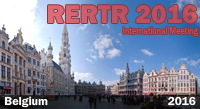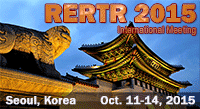Abstracts and Available Papers Presented at the
2003 International RERTR Meeting
ANL PROGRESS IN MINIMIZING EFFECTS OF LEU CONVERSION ON CALCINATION OF FISSION-PRODUCT 99MO ACID WASTE SOLUTION
Allen J. Bakel,
George F. Vandegrift, Kevin J. Quigley, Scott B. Aase,
Michael K. Neylon,
Kevin P. Carney, and A. Travelli
Argonne National Laboratory
9700 South Cass
Avenue, Argonne, IL 60439 - USA
ABSTRACT
The goal of the Reduced Enrichment for Research and Test Reactors (RERTR) Program is to limit the use of high-enriched uranium (HEU) in research and test reactors by substituting low-enriched uranium (LEU) wherever possible. The work reported here documents technical progress in our partnership with MDS Nordion (MSDN), Atomic Energy Canada Limited (AECL) and SGN of France to convert the 99Mo production in the MAPLE reactors and the New Processing Facility at AECL’ Chalk River Laboratories from the use of HEU targets to LEU targets. The role of Argonne National Laboratory and the Chemical Engineering Division in the program is to work with MDSN to minimize the impact of conversion on the efficiency and reliability of their production effort.
The primary concern with the conversion to LEU from HEU targets is that it would result in a five fold increase in the total uranium. This increase is likely to result in more liquid waste from the process. We have been working with MDSN/AECL/SGN to minimize liquid waste volume and the effects of 5 times more uranium on waste treatment and storage. The planned process for solidifying high level fissile waste from the processing of HEU targets in the New Processing Facility will use calcination of the uranium waste solution. This method generates NO2 gas and UO3 solid.
We have studied two processes for treating the uranium-rich liquid waste from a LEU-based process for MDSN: (1) an optimized direct calcination process that is similar to the planned process, and (2), a calcination of uranyl oxalate precipitate. The specific goal of the work reported here was to characterize the chemical reactions that occur during these two processes. In particular, the compositions of the gaseous and solid products were of interest. A series of experiments was carried out to show the effects of temperature and the redox potential of the reaction atmosphere. The primary products of the direct calcination process were mixtures of U3O8 and UO3 solids and NO2 gas. The primary products of the uranyl oxalate precipitate process were mixtures of U3O8 and UO2 solid and CO2 gas. Higher temperature and a reducing atmosphere tended to favor quadravalent uranium over hexavalent uranium in the solid product. These data will help to plan for pilot plant testing. In addition, the data provides information for the design of the off gas systems for pilot and production facilities.
![]() PDF version available
PDF version available
DOWNLOAD full paper in PDF format.
Contact:
Mr. Allen Bakel
Chemist
Argonne
National Laboratory
9700 South
Cass Avenue
Argonne, IL
60439-4837 USA
Phone: +1 (630) 252-9825
Fax: +1 (630) 972-5246
E-mail: [email protected]




